Wine, snails and longing in Crete
Greece's biggest island is full of surprises - and some brilliantly idiosyncratic food and wines. I took to the road to investigate
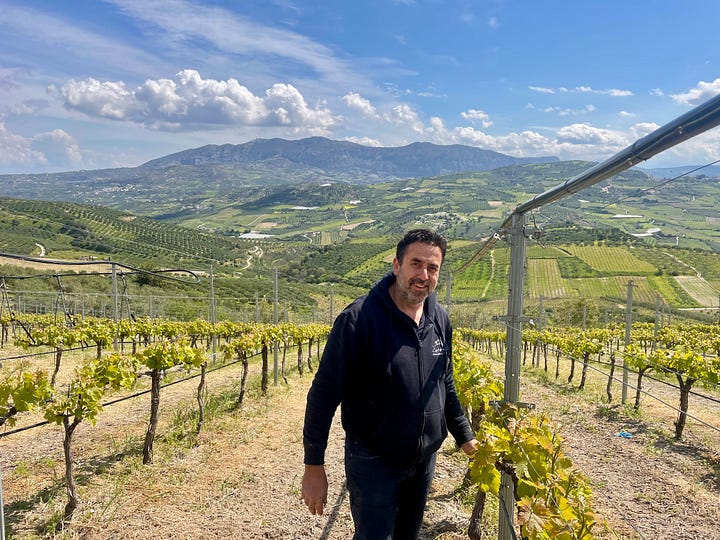
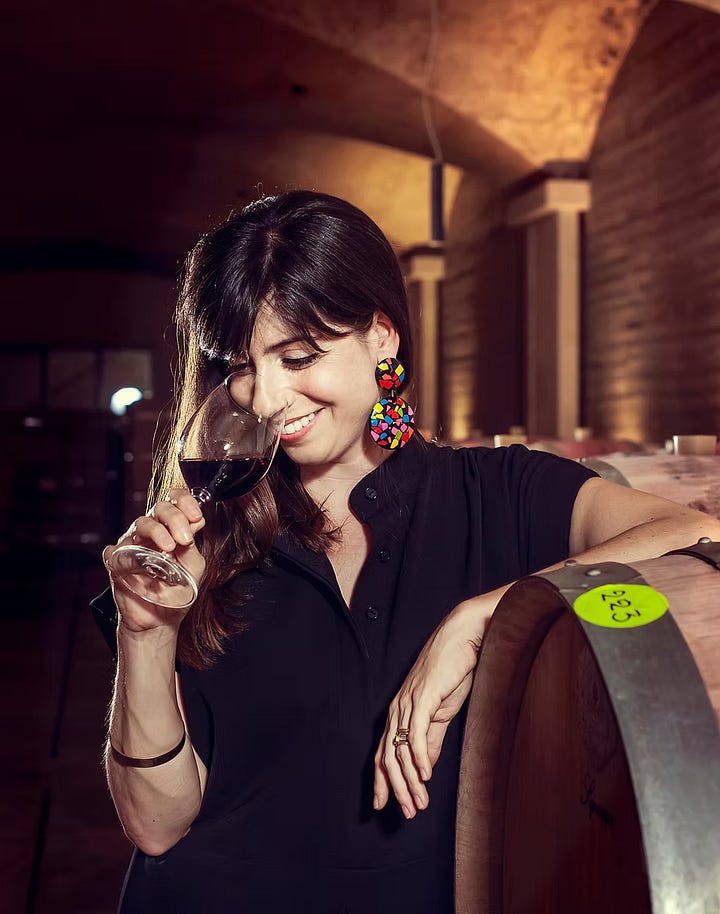
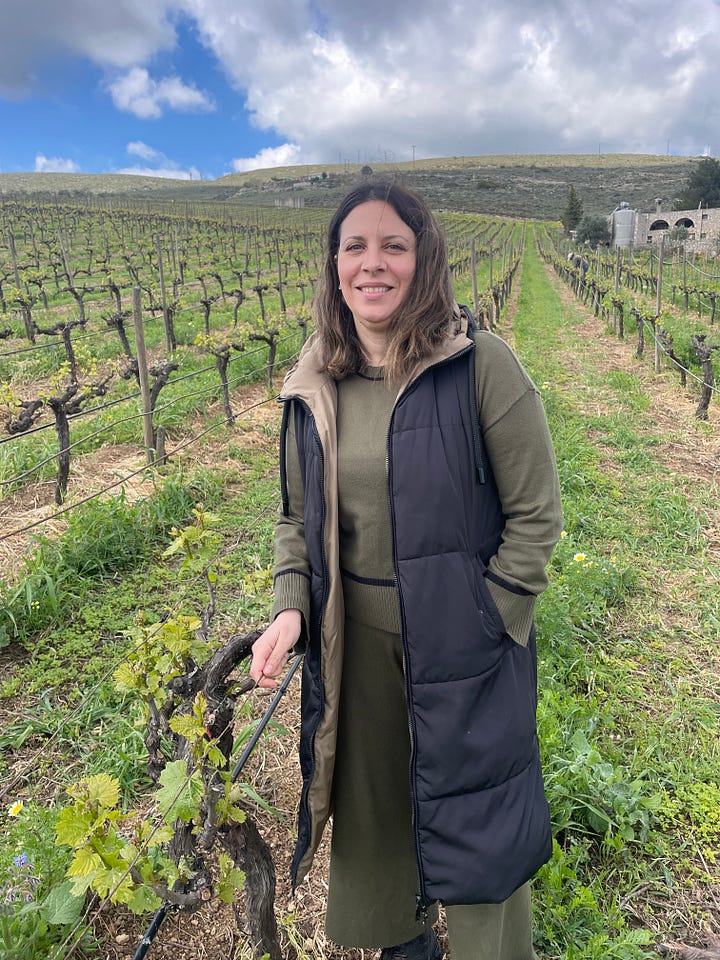
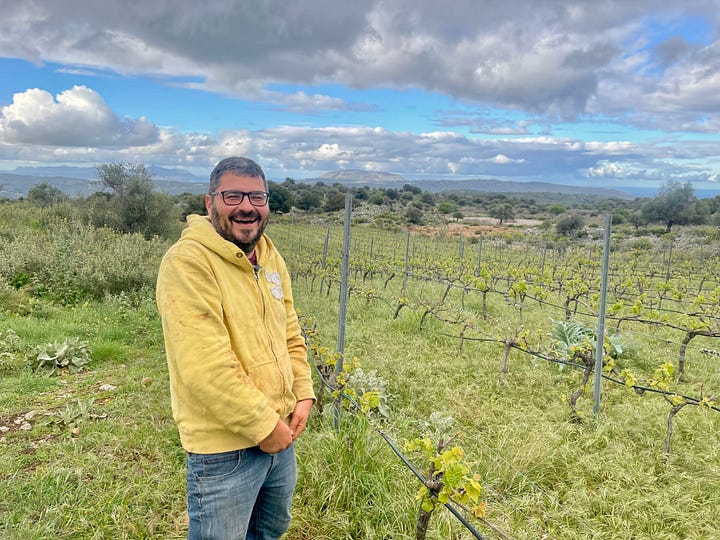
The vineyard falls away before us in an astonishing carpet of green – thick grasses, peas, weeds and flowers almost as high as the vines. The rocky track to reach this part of the Manousakis wine estate is bordered by even thicker vegetation, an argiada scrub of Mediterranean grass, herbs and shrubs. We’re at nearly 700 metres (2,300 ft) and a stiff breeze is tumbling grey clouds over dark mountains. It feels very distant from a summer Greek beach holiday – yet this is early spring in Crete.
Crete defies easy classification. It’s an island, but it’s easy to forget that travelling in its mountainous interior. At my next stop after Manousakis, I was reminded of the sea’s presence by the Akrotiri peninsula in the distance as I stood in another lush vineyard with Antonis Dourakis. But from the balcony in Chania where I’m writing this, in bright sunshine, I can see the snow-capped peaks of the White Mountains 30km to the south, rising to over 2,450 metres (8,000 ft.) Crete is big: to drive its length, west to east, would take the best part of five hours.
And while many places in Greece are fiercely parochial, Crete is more so than most. The local dialect can be tricky for mainland Greeks to understand. It uses many borrowings from Italian (the Venetians ruled Crete from the early thirteenth to the mid-seventeenth centuries) and Turkish: the Ottomans defeated the Venetians and stayed more than 200 years. Indeed Crete was one of the last places in Greece to gain independence, locals mounting a successful armed revolt against the Turks in 1898. Cretans in contemporary pictures look fierce. Alexandra Manousakis shows me pictures of her grandfather as a child before World War I, flanked by extravagantly moustachioed uncles in traditional high boots and waistcoats.
That sense of separateness and tradition is clear in many Cretan wineries today – though older, low-intervention ways of working are these days looking more fashionable. Many of the vineyards I visited are organic. And while none of the producers professed to using of-the-moment regenerative agriculture – using cover crops between vines, grazing animals into the vineyard, minimal tilling – many were effectively doing so by default.
For example at her estate in Peza, south of Heraklion, Emuanuela Paterianakis’s vineyard is certified organic but she also uses some biodynamic preparations. She grows grasses and pea-family plants between the vine rows to fix nitrogen and grazes sheep on them in winter, and does not plough the soil.
Andreas Dourakis’s commitment to organics came from a traditional place too. He started farming in the 1980s, when he made wine only for family and friends: “I didn’t have it in mind to be a winemaker - it just happened,” he says. “Against nature we can do nothing.” He says that growing up, his family raised 80 per cent of their food themselves.
Or gathered it: foraged foods remain a staple of the Cretan menu. Snails collected in this way are a local favourite. More ubiquitous are horta (χόρτα- wild greens). Horta is on the menu in tavernas across Greece, but there seems to be a bigger range available in Crete. The species are a little tricky to identify: the main one in season just now, stamnagathi is supposedly Spiny Chicory in English, a slightly bitter, stalky plant, served lightly boiled with lemon juice and olive oil.
Vines and wine are – or at least were – an integral part of this home production of food. “Every house in village used to grow grapes and make wine,” says Myrsini Archontaki, of the tiny Potolo collective in Tsourouniana. She and her two collaborators work organically, though they’re not certified, and they dry-farm too: “Nobody had irrigated here in 70 years, so why do you need to now?” They exchange labour with friends harvesting olives; their production is just 2,500 bottles a year.


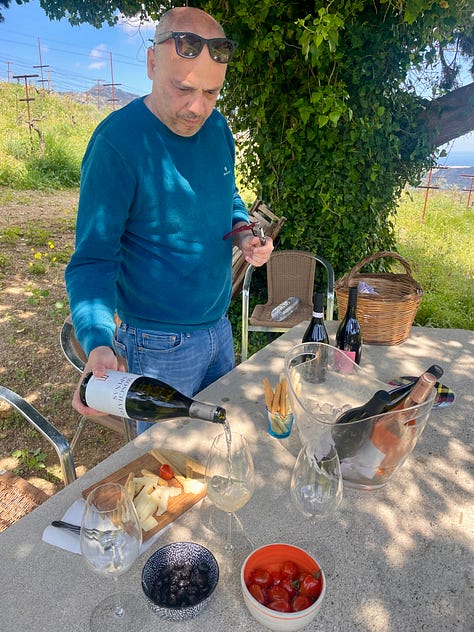
Similarly, Kostas Manouras got into wine partly by tradition – “I grew up in the vineyards with my grandfather doing the harvests,” he says – and partly by accident. After studying fine arts and working abroad, he came back and worked as a graphic designer, then as tattoo artist. He still does tattoos, as well as farming a hectare of the very rare white Plyto grape, rescued a few years back by the Lyrarakis estate, and slightly-less-rare Cretan white Thrapsathiri. I enjoyed more of Kostas’s Theros Plyto 2021 than was probably advisable.
Such local grapes are, for me, one of the joys of discovering Greek wines. There are obscure local varieties all over Greece, but some particularly interesting ones in Crete. Vidiano, now a staple white, was championed by winemakers including Manolis Karavitakis: now his son, Nikos, runs the business and makes some very fine Vidianos. “I wanted to believe in [Vidiano] because of the history of my family,” Nikos tells me.
There is shape-shifting Romeiko, a pale red grape that can make red, white (blanc de noirs), sparkling white, sweet and orange wines. Dourakis’s “Orange de Noirs”, as they label it, is in fact the best orange wine I’ve ever tasted. Kotsifali and Mandilari are more robust reds but also capable of serious, ageable wines, as in the hands of Nikos Gavalas of Fragospito. And probably my favourite, pale-red Liatiko, which can produce light but elegant, beautifully balanced wines. Economou’s astonishing (and very expensive) Antigone 2004 Liatiko is one of the most exciting wines I’ve tried in the past year.
But as all this suggests, despite the importance of tradition, the Cretan countryside and its grapes are in fact in constant evolution. The devastating wine disease phylloxera, which ravaged European vineyards in the late nineteenth century, arrived here only in 1978. Apart from a few vineyards planted on sandy soils that stop the phylloxera louse, it destroyed almost all the vines. Some farmers replanted on phylloxera-resistant American rootstocks, as elsewhere in Europe – but many didn’t bother, instead planting olive trees.
Meanwhile many of the local wine cooperatives have gone bust, plagued by years of mismanagement and an inability to raise quality for export markets. The financial crisis of 2008 and collapse of the domestic wine market was the final straw for some, like the Archanes co-op; others, such as Kissamos, had already failed by then.
The growth of olive cultivation does provide a source of year-round work for vineyard workers. In Dafnes, south of Heraklion, around 70 per cent of the land is now planted to olive trees. Nikos Douloufakis farms 25 hectares of vines here – plus the same amount farmed by growers whose grapes he buys – and he has 1,300 olive trees. That keeps eight people in full-time work year round. In parts of the island, oranges and other citrus fruit also provide winter work. But as in so many parts of Europe, the rural workforce has dwindled as young people leave for the cities and better-paid jobs in tourism. Skilled vineyard workers are in short supply.
And despite an amazing mountain landscape – the patchwork of olive trees and vineyards, wildflowers everywhere – it is ultimately Crete’s people that make it most engaging. Tastings and stories almost inevitably over-run; then arriving an hour late for the next visit doesn’t really seem to faze anyone. Hospitality – one of the joys of Greece – is a particularly strong tradition here: it’s hard to taste wine anywhere without being offered graviera cheese, dakos (ντάκος - wholewheat rusks), tiropites (cheese pies).
After visiting his winery, we retired with Zacharias Diamantakis and some of his team to the tiny nearby Café Gonia: dakos, cheese, pickled wild onions, olives and tarama appeared on the table; then beef stifado with shallots, lamb with artichokes, a tortilla made of horta. “Lunch” finished well after 6pm.
At Moinoterra vineyard in Archanes, my friend Chania sommelier Iro Koliakoudakis and I joined owner Nikos Stathoglou under a tree in his vineyards at 400 metres (1,300 ft) to taste his wines over cheese, olives and cherry tomatoes sprinkled with flakes of salt. And at Fragospito, we tasted at a big table on the hill with Nikos Gavalas, his wife, daughters and giant, 4x4-riding sheepdog Frago, before falling on a lunch of giouvetsi (beef and orso pasta stew), lamb ribs and horta.
These are the rhythms and landscapes that prompt nostos (νόστος) in diaspora Cretans: a return to home, and a longing for it. Ted Manousakis left Crete for America aged 11, in 1954. Despite a successful business career, he returned to his family’s home near Vatolakkos to plant a vineyard in 1993. The winery is now run by his youngest American daughter, Alexandra, and her husband Afshin. Their top wine range, Nostos, honours the urge to return to Cretan roots. I’ll be happy to return home to south London – but I’ll be longing for Crete too.
Some favourite Cretan wines and their UK stockists
Where I’ve marked wines as N/A UK, none of that producer’s wines are currently available in the UK. Any importers reading this: start shipping these guys’ wines!
Manousakis – Nostos Grenache 2018 – Manousakis are unusual in Crete in planting Rhône varieties like Grenache. This red boasts sweet fruit but considerable finesse, with solid acidity and dusty tannins – it put me in mind of some Spanish Sierra de Gredos Garnachas. Really good (Maltby & Greek have the 2017 and the very good 2020, from £32.50.)
Dourakis - “Lihnos” Vidiano 2022 – a lovely expression of the white Vidiano grape: relatively rich and full (some of this has had time in oak barrels) but balanced with freshness (Epinoia, Somerset Wine Company, from £23.14.)
Karavitakis – “Nomas” 2023 Assyrtiko – sadly, this is the only single-varietal from the Karavitakis’s range currently available in the UK (though the Wine Society regularly carry his very decent “Kompsos” Liatiko.) This Assyrtiko, from an old-vine selection, has plenty of the white grape’s classic steely acidity, pure citrus fruit and minerality, with a touch of salinity (Jeroboams have the 2022, £18.50.)
Potolo – Romeiko red 2024 – such pure red fruit, lip-smacking freshness and acidity, with a touch of pepper (N/A UK.)
Paterianakis - Melissinos rosé 2024 – a very appealing blend of Kotsifali and Syrah: sweet red fruit, pepper, fresh, harmonious (N/A UK.)
Lyrarakis – Psarades Dafni 2024 – another Cretan white grape rescued by this estate from the brink of extinction. “Dafni” means bay (the herb) in Greek, and there are indeed pronounced notes of bay here on the nose and palate: subtle, complex, very unusual (The Wine Society, Uncorked, Hedley Wright have the 2022 or 2023, from £11.95.)
Douloufakis - Dafnios red 2021 – this is 100 per cent Liatiko, with some of it seeing some time large or used barrels: ripe, plummy fruit balanced with freshness and chewy tannins, quite long (Maltby & Greek, Epinoia, Kudos Wines, Hedonism and elsewhere, from £19.50.)
Diamantakis – “Petali” 2021 Liatiko – a relatively light red, fresh and savoury, very appealing (Loki, Caviste, Woodwinters, Old Chapel Cellars have the 2020, from £14.99.)
Theros - Plyto 2021 – this actually includes 10% Thrapsathiri; wonderfully fresh and pure, herbal notes, minerality with a touch of salinity, quite long (N/A UK.)
Moinoterra – Moschato Spinas 2024 – Nikos Stathoglou and his oenologist Grigoris Skopelitis somehow coax a wine from this classic, aromatic Cretan variety that is both deeply fragrant, with sweet fruit, yet also has piercing acidity. Far more interesting than most Cretan Moschatos, and food friendly (N/A UK.)
Fragospito – Kotsifali 2018 – alas this isn’t available in the UK but I was mightily impressed. Forest floor aromas that reminded me of serious red Burgundy; complex, elegant, tannins still a little grippy but it will last a long while yet (N/A UK.)
Transparency declaration: I visited all the wineries mentioned as their guest.




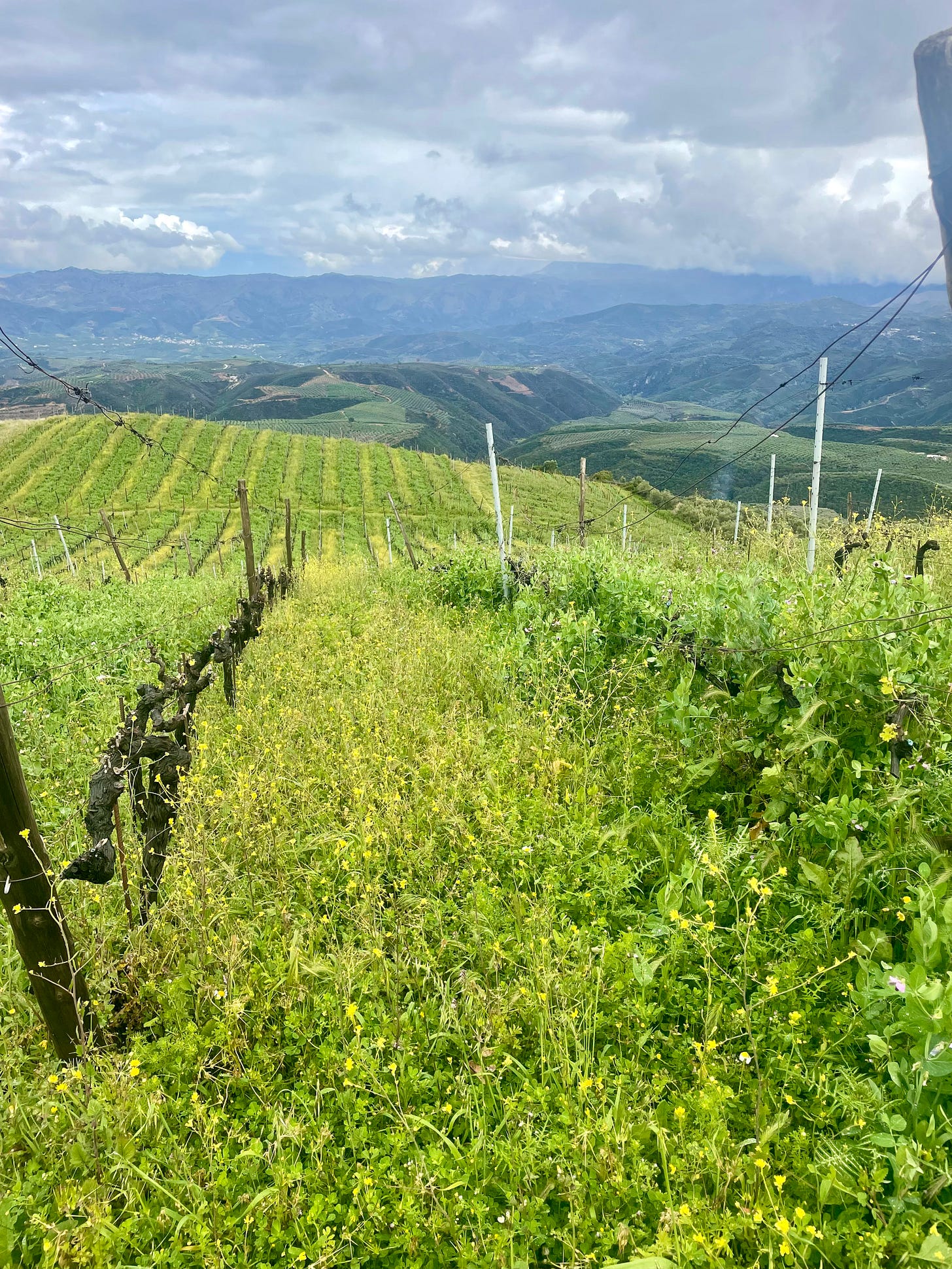
I thought I did not like Orange wine until I tried this stunning Majestic exclusive £12.50 on mix six deal.
If this doesn't convert you to the merits of SOME Orange wines,I don't know what will!
Lyrarakis Assyrtiko-Vidiano Orange Wine, Crete 2023/24
Hello Andy,
Had a great recent holiday in Kalves near Chania where I got to talk with a local wine wholesaler.Liatiko and Vidiano were my favourites.
Liatiko Petali is a great Beaujolais type red available from Wood Winters Stirling and did you know they make ice wine on Crete?
A tasting at Akritiko monastery where the grapes are harvested normally then bunged in a freezer lorry and then fermented.Quite sweet but apparently their best seller.These monks are good at business!